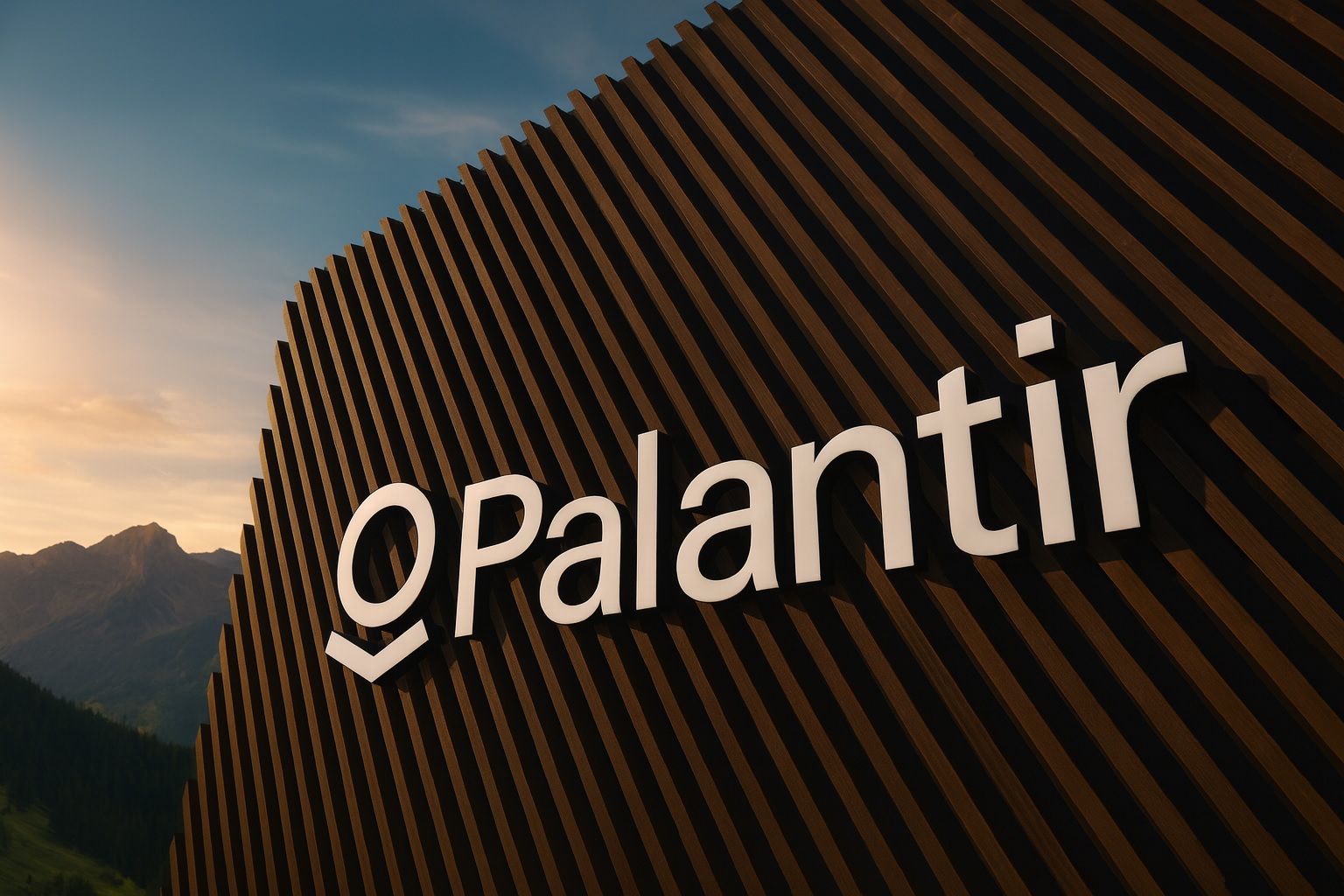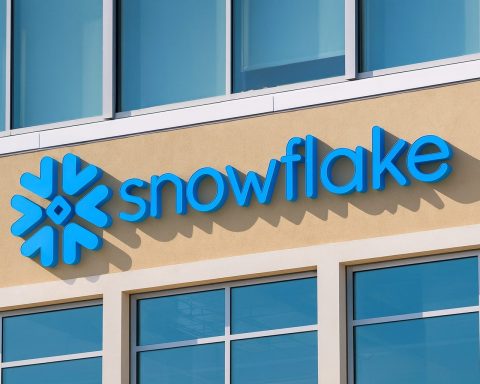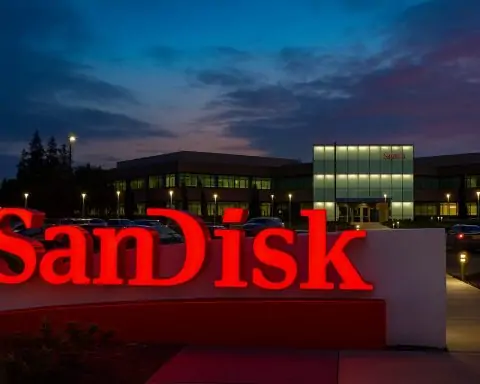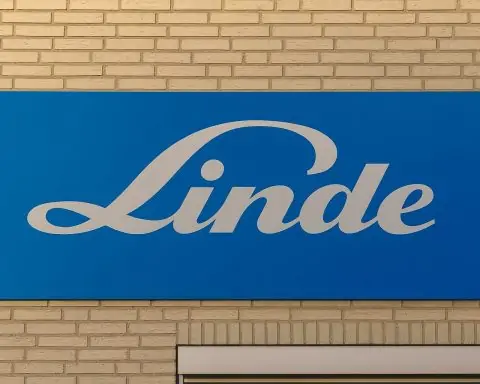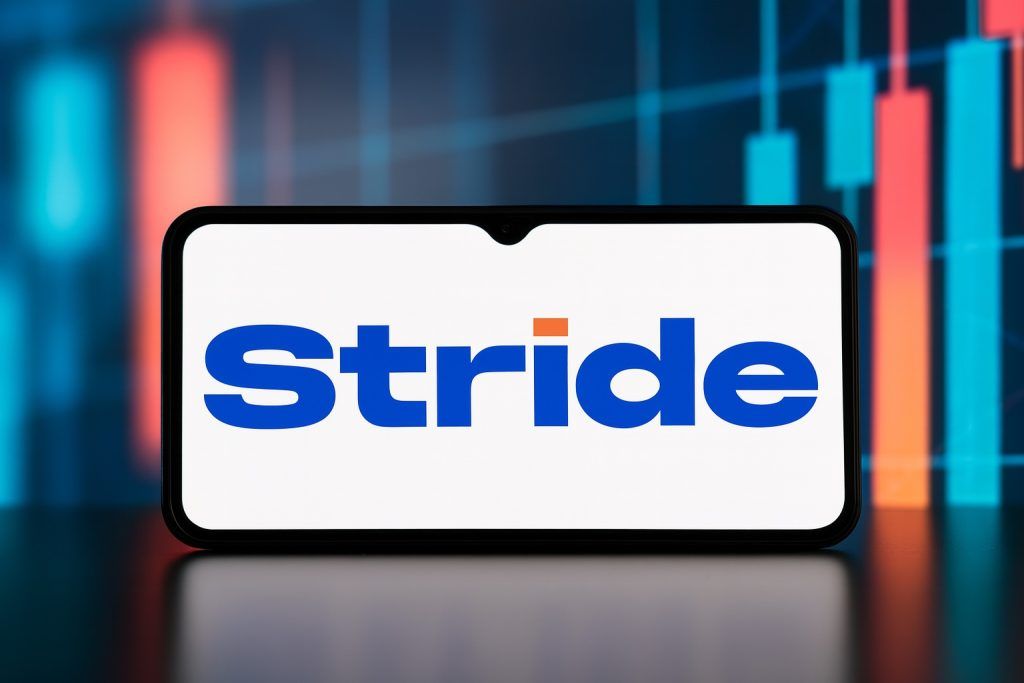Key Facts: – Price Surge: As of Oct. 29, 2025, PLTR closed around $195 [1], after hitting an intraday peak near $198. The stock is up roughly 300% in 2025 [2], making it one of the year’s hottest tech winners. – Market Cap: At these levels Palantir’s market value is on the order of $400–425 billion [3] [4] – rivaling or exceeding legacy defense giants (e.g. Lockheed, Northrop) [5]. – Major Deals: 2025 has seen a flurry of big contracts and partnerships. Highlights include a 10-year U.S. Army program (up to $10B) and a UK Ministry of Defence AI pact (~£750M–£1.5B) [6], a new Boeing defense alliance (lauded as “game-changing” by Boeing’s chief) [7], a Snowflake cloud-AI partnership [8], plus significant federal wins (e.g. $385M VA, $30M ICE) and new accords with Lumen (>$200M) and Poland’s Defense Ministry [9] [10]. (A healthcare AI partnership was also announced with OneMedNet on Oct. 6 [11].) – Financial Strength: Q2 2025 revenue jumped to $1.004B (+48% YoY) [12], with GAAP net income $327M and adjusted EPS ~$0.16. Palantir exceeded $1B quarterly revenue for the first time [13], prompting management to raise 2025 sales guidance to $4.142–4.150B [14] (≈+45% YoY). Analysts expect Q3 rev ~$1.083–1.087B [15], with results due Nov. 3. – Valuation: PLTR trades near 100× forward sales and over 200× earnings [16] – among the highest multiples of any large software stock. Many analysts consider it “wildly” overvalued at current prices [17] [18]. – Analyst Divide: Bulls (e.g. Wedbush’s Dan Ives) call Palantir a top “AI stock” and even envision a $1 trillion market cap by 2028 [19]. Bears warn the rich valuation leaves little margin for error – RBC, for example, reiterates an Underperform rating and $45 price target [20]. Short-seller Citron pegs fair value around $65–$70 [21]. Consensus is more cautious (median ~Hold, $150–$160 target). – Investor Sentiment: PLTR is riding a broader AI euphoria. The tech-heavy Nasdaq has repeatedly hit records on AI optimism (e.g. strong chip earnings), and “enthusiasm for AI extends to data-focused stocks like Palantir” [22]. With every headline deal, momentum investors have piled in. Still, Wall Street surveys warn of an “AI bubble,” often citing PLTR’s extreme run-up [23]. – Stock Split Talk: The high share price has fueled chatter of a split. RBC’s Rishi Jaluria notes retail investors “are largely focused on the potential for a stock split” [24]. (Palantir has not announced any split.)
Red-Hot Rally Propels Palantir Stock to All-Time High
Palantir’s stock has gone parabolic in recent months. On Oct. 28–29, 2025, PLTR surged to intraday highs around $198 [25], just shy of its all-time peak (≈$192). That capped an astonishing ~300% YTD gain [26], vastly outperforming the S&P 500. By late Oct. the stock was trading roughly in the $190–197 range. At ~$195 per share, Palantir’s market cap is on the order of $400+ billion – putting it in the league of the largest defense companies [27]. Long-term holders have seen life-changing returns; a $1,000 investment at Palantir’s 2020 IPO would be worth roughly $18,000 now [28].
This rally is fuelled by AI and defense sector mania. Palantir’s dual role – as a provider of cutting-edge AI/data analytics to both government and industry – has made it a poster-child for the year’s tech boom. As one analyst noted on an October trading rally, “AI continues to come up with new alliances…and there’s no reason to change [the bullish] outlook” [29]. Indeed, every major company or military partner PLTR signs seems to send the stock higher. For example, earlier in October PLTR hit roughly $180 on news of strong chip earnings and Fed optimism lifting tech names [30]. The current rally has drawn comparisons to legendary tech runs: even Salesforce’s CEO quipped that Palantir is the “most expensive enterprise software stock” he’s ever seen (trading at ~100× revenue) [31].
Recent Volatility: The uptrend hasn’t been without wobble. On Oct. 3, a leaked U.S. Army memo raised concerns about a battlefield network system built on Palantir software. The news sent PLTR down about 7.5% in one day [32]. However, Palantir and the Army quickly clarified that the issues involved an outdated prototype and no security flaws in the core platform [33]. Shares rebounded almost immediately. The episode underscored how sensitive Palantir is to defense-related headlines, given its lofty valuation, but it did not dent the longer-term momentum.
Major Contracts and Partnerships Driving Momentum
Palantir’s “deal pipeline” has been extraordinarily active in 2025. A steady drumbeat of contract wins across defense, government, and tech has underpinned the stock’s rise [34] [35]. Key recent wins include:
- U.S. Army ($10B): In late July Palantir landed its largest contract ever – a 10-year program with the U.S. Army valued up to $10 billion [36]. This agreement consolidates scores of Army data and intelligence systems under Palantir’s software, effectively making its platform a backbone for Army AI/analytics. Investors saw it as a massive vote of confidence in Palantir’s Pentagon strategy.
- UK Ministry of Defence (£1.5B): In September Palantir signed a multi-year AI data partnership with Britain’s MoD worth roughly £750 million (potentially £1.5B) [37]. Described as the company’s biggest non-U.S. deal, the pact will deploy Palantir’s AI software across UK military operations. U.S. and UK officials even highlighted the agreement on a state visit, underscoring Palantir’s growing geopolitical reach.
- Boeing Alliance: On Sept. 23, Boeing’s Defense, Space & Security division announced a new partnership to integrate Palantir’s AI platform into its aerospace manufacturing and supply chain. Boeing’s defense chief praised the effort as “game-changing,” enabling decision-making “not in weeks, but in days and hours” thanks to Palantir’s data analytics [38]. This high-profile corporate tie-in boosted PLTR by signaling that even established industry giants are embracing Palantir’s tech.
- Federal Agency Contracts: Palantir has also kept up a steady pace of smaller U.S. government wins. Early October brought a $385.4M contract with the Department of Veterans Affairs and a $29.9M task order with Immigration and Customs Enforcement [39]. While individually modest, these deals expand Palantir’s footprint across agencies (healthcare, law enforcement, etc.) and add recurring revenue. “The steady drumbeat of big deals – from the Army and UK to Boeing, Snowflake and others – shows Palantir’s tech is in high demand” [40], noted TS2 analysts.
- Snowflake Partnership: Palantir is pushing further into enterprise IT. On Oct. 16 it announced a strategic tie-up with cloud-analytics leader Snowflake [41]. The two will integrate Palantir’s AI platform with Snowflake’s Data Cloud so that corporate customers can apply Palantir’s analytics directly to their cloud data. This was well-received: Snowflake’s stock even ticked up on the news [42]. For Palantir, working with a dominant cloud vendor not only validates its software in the mainstream IT world but also exposes it to Snowflake’s vast customer base.
- Lumen Telecom Pact: Also in late October, Palantir announced a multi-year partnership with telecom provider Lumen Technologies to bring AI to network infrastructure. Under the deal, Lumen will spend >$200M on Palantir software as it integrates Palantir’s platforms with Lumen’s connectivity solutions [43]. The goal is to make data processing “200× faster” for enterprise clients [44]. Investors cheered the move as another sign Palantir can sell big contracts outside of government.
- Poland Defense Collaboration: Internationally, Palantir scored another headline on Oct. 27 when Poland’s Defense Ministry signed a letter of intent with Palantir on data, AI, and cybersecurity systems [45] [46]. Poland, a top NATO defender, becomes the latest U.S. ally to adopt Palantir tools. The Polish defense chief said the cooperation builds on a prior MoU and will “enhance data integration, real-time analytics and decision-making” [47]. News of the Poland deal gave PLTR a bump in Warsaw trading and signaled growing European demand for Palantir’s military tech.
- Other Partnerships: Palantir has also expanded in healthcare and industry. In early October it announced that OneMedNet (a U.S. clinical data network) selected Palantir’s AI platform to power its real-time provider data marketplace [48]. (OneMedNet’s CEO said Palantir’s system will “revolutionize” access to regulatory-grade clinical data.) In addition, Palantir continues to upsell existing clients: for example, it extended a partnership with Lear (automotive tech) to broaden Palantir Foundry and AI use in car factories [49]. These deals illustrate that Palantir’s technology is now sought after across both government and commercial sectors, a dual-engine growth story many analysts cite as bullish.
Strong Financial Results and Outlook
The fundamentals are catching up to the hype. Palantir’s Q2 2025 earnings (announced Aug. 4) were outstanding. Revenue was $1.004 billion (up 48% YoY) [50] – the company’s first $1B quarter. GAAP net income hit $327 million (33% margin), with operating income $269M (27% margin) [51]. Palantir now consistently generates positive cash flow (54% cash conversion in Q2 [52]) and boasts a Rule-of-40 score of 94% [53]. The business is more profitable than most high-growth tech peers. “This was a phenomenal quarter,” Palantir co-founder Alex Karp said, citing skyrocketing U.S. government and commercial growth [54] [55].
By division, U.S. commercial revenue was $306M (+93% YoY) in Q2, and U.S. government revenue $426M (+53%) [56]. Total remaining contract value (pipeline) climbed to ~$2.3B [57], indicating strong future backlog. Encouraged by the beat, management raised full-year guidance: FY2025 revenue is now expected between $4.142–4.150B [58] (vs. prior ~$3.91B consensus). Adjusted operating income is guided to ~$1.92B [59].
Looking ahead, Palantir will report Q3 earnings on Nov. 3, 2025. Analysts project revenue around $1.083–1.087B (≈50% growth) [60]. The street consensus EPS forecast is roughly $0.15–$0.17. Given how “priced for perfection” the stock is [61], many say Palantir will need another blowout quarter and upbeat guidance to keep the rally going. Any hint of slowing growth or a cut in government IT spending could trigger a shakeout. For now, however, guidance is firm: in its Q2 release Palantir reiterated full-year sales and profit targets, and forecast Q3 revenue in line with analyst estimates [62] [63].
Analysts Split: Valuation, Forecasts and Market Buzz
Wall Street is sharply divided on Palantir. On one side are the bulls: analysts who see PlTR as a rare profit-machine in the AI/data space. Wedbush’s Dan Ives calls PLTR “one of the best AI stocks” and has a 12-month target north of $200 [64]. He and others argue Palantir’s unique mix of defense and AI/data prowess could drive years of strong growth. Earlier this year, a Thunder Bridge survey even put Palantir on par with fast-growing AI names like Nvidia.
On the other side are skeptics. Critics point out that Palantir now trades at 100×+ forward sales and well over 200× P/E [65] – “one of the most expensive” valuations out there [66]. For context, tech giants like Meta or Apple trade under 40×, and even Nvidia’s multiples are lower. Short-sellers like Andrew Left of Citron have blasted PLTR’s valuation as “ludicrous,” arguing fair value is only about $65–$70 per share [67]. Major firms are cautious: RBC’s Rishi Jaluria, for example, reiterated an Underperform rating (and a $45 target) this month, calling the current price “unsustainable” absent extraordinary future growth [68]. The consensus analyst rating remains a lukewarm Hold.
Investor sentiment mirrors this split. The story of Palantir as an “AI goldmine” has attracted momentum investors and trading buzz (even stock-split rumors [69]), but it has also invited talk of a tech bubble. A recent Bank of America survey found many institutional investors worry an “AI bubble” is forming [70], often citing Palantir’s sky-high metrics. Financial media frequently lists PLTR alongside AI bellwethers on “most overvalued” watch lists. As one reporter put it, despite Palantir’s earnings growth, “many people believe that Palantir’s stock is significantly overvalued” [71].
Still, the AI narrative remains king. Oracle’s Larry Ellison, for example, has quipped that AI’s future “depends on [the] private data analysis” core to Palantir’s model [72] – a high-profile endorsement of the company’s mission. With global defense budgets rising and commercial AI budgets ballooning, many investors are willing to look past the lofty P/E. In fact, Investing.com’s technical summary now rates PLTR a “Strong Buy” (RSI ~65, all major moving averages signalling buy) [73] [74] – reflecting the momentum in the chart.
Technical Outlook: Uptrend Remains Intact
From a chart perspective, Palantir is firmly in an uptrend. Technical indicators remain bullish: as of Oct. 29 the 14-day RSI is about 65 [75] (nearing overbought but not extreme), and the MACD and other oscillators are positive [76]. All key moving averages (5-, 20-, 50-, 100-, 200-day) are rising and currently sit below the price (e.g. the 50-day MA is ~$184, well under current ~$195) [77]. Investing.com rates the MA and indicator signals as overwhelmingly “Buy” (11 of 11 buy signals) [78]. The chart has found short-term resistance around the pivot zone ~$197–198 [79], and a break above that (as happened on Oct. 29) can open the door to new highs near $200.
In sum, the stock’s momentum and bullish technical readings suggest the rally can continue in the near term – provided fundamentals hold. However, the steep rise also means PLTR is a swingy stock. Pullbacks should find support around prior consolidation levels in the $180–$190 range. Traders note that a string of “buy the dip” bounces has kept the uptrend intact so far. Going forward, a clean chart above the October pivot levels would be a positive sign, while a break below key moving averages (e.g. 50-day) could signal the rally losing steam.
Valuation and Peer Comparisons
Palantir’s valuation is unprecedented for a software stock of its size. At roughly $425B market cap, it now rivals or exceeds the value of entire industries: combined, legacy defense companies Lockheed Martin, Raytheon (RTX), and Northrop Grumman are on a similar scale [80]. Among pure tech companies, PLTR’s multiples dwarf nearly all peers. For example, Snowflake (a cloud data company recently tying up with Palantir) trades at on the order of 15–20× sales. Palantir is around 100× sales [81] – levels typically seen only in hyper-growth startups. And yet Palantir, unlike those startups, is profitable and cash-rich.
In the AI sector, Palantir’s closest peers might be companies like C3.ai or smaller “AI software” plays. C3.ai, for instance, saw big gains early in the AI cycle but trades at a much lower multiple and much smaller scale. Hardware AI stocks (Nvidia) and Big Tech (Microsoft, Google) trade at lower earnings multiples, though of course their absolute price is much higher. Palantir is unique in straddling AI-software and defense contracting. This dual nature is a double-edged sword: it means Palantir can capture high-margin government deals, but it also means its stock can behave more like a cyclically-sensitive defense name. Whatever the peer set, all signs point to PLTR being the most richly valued name in the group.
Because the bar is so high, analysts caution Palantir has to deliver similarly exceptional results going forward. As one note put it, the stock is essentially “priced for perfection” [82]. If Palantir can continue converting its huge pipeline into revenue, the multiples might be justifiable. But compared to peers – even other AI beneficiaries – its valuation is truly in a class of its own. Investors are keenly aware that any stumble could leave PLTR vulnerable to profit-taking.
Market Outlook and Analyst Projections
Looking beyond Q3, analyst forecasts vary widely. On the optimistic side, some see Palantir continuing at double-digit growth rates for years. For instance, Piper Sandler increased its 12-month target to $201, citing the massive deal pipeline [83]. ARK Invest and a few other funds remain bullish on Palantir’s long-term trajectory. In a 10-year view, PLTR would need to compound at ~30-35% annually to justify current prices, which some bulls find plausible given the AI/domains.
Bearish projections, however, are much lower: the average Wall Street target (mid-$150s) implies modest upside, and a few value-oriented shops have targets under $60, expecting growth to slow or competition to erode pricing power. In fact, the sell-side is currently almost evenly split (in ratings terms) between Buys/Holds and Sells, reflecting the huge disagreement on risk/reward.
Institutional holders are watching closely. Some billionaires/investment funds (e.g. Citadel, ARK, maybe others) have shuffled their Palantir positions recently, but no major new quarter-end stakes are public. The street as a whole seems to be waiting for Nov. 3 results as a potential catalyst. A blowout beat could reignite a fresh leg up (maybe towards $200+), while any hint of deceleration could result in a multi-session pullback.
Conclusion – Bubble or Breakout?
Palantir’s October 2025 story is one of sky-high expectations. The company’s remarkable string of contracts and its profitable 2025 ramp have made it a poster child for the AI-investing craze. As one TS2 analyst put it, “the steady drumbeat of big deals…shows Palantir’s tech is in high demand” [84], which in turn fuels the stock. At the same time, every victory feeds the bubble narrative – from $10B Army deals to $200M Lumen pacts – and critics warn that eventually valuations must match reality.
For the public investor, the question is whether Palantir’s next beat or any new breakthroughs can justify its premium valuation. In the short term, the technical and news-driven momentum suggests more upside is possible. But in the long run, most agree that Palantir will have to deliver continuously exceptional growth to live up to current forecasts. As of late Oct. 2025, Palantir stands at the climax of a rally: heroes see a $1T company in waiting, while skeptics see a classic mania top. Only time (and earnings) will tell which view is correct.
Sources: Company filings and press releases [85] [86] [87]; financial media and analyst reports [88] [89] [90] [91]; Reuters/Factiva news [92] [93] [94]; TechStock² analysis [95] [96] [97]. All data as of Oct. 29, 2025.
References
1. www.investing.com, 2. ts2.tech, 3. ts2.tech, 4. ts2.tech, 5. ts2.tech, 6. ts2.tech, 7. ts2.tech, 8. ts2.tech, 9. ts2.tech, 10. ts2.tech, 11. www.globenewswire.com, 12. www.sec.gov, 13. www.sec.gov, 14. www.sec.gov, 15. www.sec.gov, 16. ts2.tech, 17. ts2.tech, 18. ts2.tech, 19. ts2.tech, 20. ts2.tech, 21. ts2.tech, 22. ts2.tech, 23. ts2.tech, 24. www.fastcompany.com, 25. www.investing.com, 26. ts2.tech, 27. ts2.tech, 28. ts2.tech, 29. ts2.tech, 30. ts2.tech, 31. ts2.tech, 32. ts2.tech, 33. ts2.tech, 34. ts2.tech, 35. ts2.tech, 36. ts2.tech, 37. ts2.tech, 38. ts2.tech, 39. ts2.tech, 40. ts2.tech, 41. ts2.tech, 42. ts2.tech, 43. www.reuters.com, 44. www.reuters.com, 45. www.bloomberg.com, 46. www.tradingview.com, 47. www.tradingview.com, 48. www.globenewswire.com, 49. stockstotrade.com, 50. www.sec.gov, 51. www.sec.gov, 52. www.sec.gov, 53. www.sec.gov, 54. www.sec.gov, 55. www.sec.gov, 56. www.sec.gov, 57. www.sec.gov, 58. www.sec.gov, 59. www.sec.gov, 60. www.sec.gov, 61. ts2.tech, 62. www.sec.gov, 63. www.sec.gov, 64. ts2.tech, 65. ts2.tech, 66. ts2.tech, 67. ts2.tech, 68. ts2.tech, 69. www.fastcompany.com, 70. ts2.tech, 71. www.fastcompany.com, 72. ts2.tech, 73. www.investing.com, 74. www.investing.com, 75. www.investing.com, 76. www.investing.com, 77. www.investing.com, 78. www.investing.com, 79. www.investing.com, 80. ts2.tech, 81. ts2.tech, 82. ts2.tech, 83. ts2.tech, 84. ts2.tech, 85. www.sec.gov, 86. www.sec.gov, 87. www.globenewswire.com, 88. ts2.tech, 89. ts2.tech, 90. ts2.tech, 91. www.fastcompany.com, 92. www.bloomberg.com, 93. www.reuters.com, 94. www.tradingview.com, 95. ts2.tech, 96. ts2.tech, 97. ts2.tech
